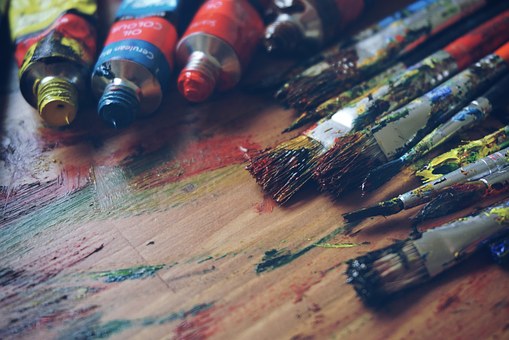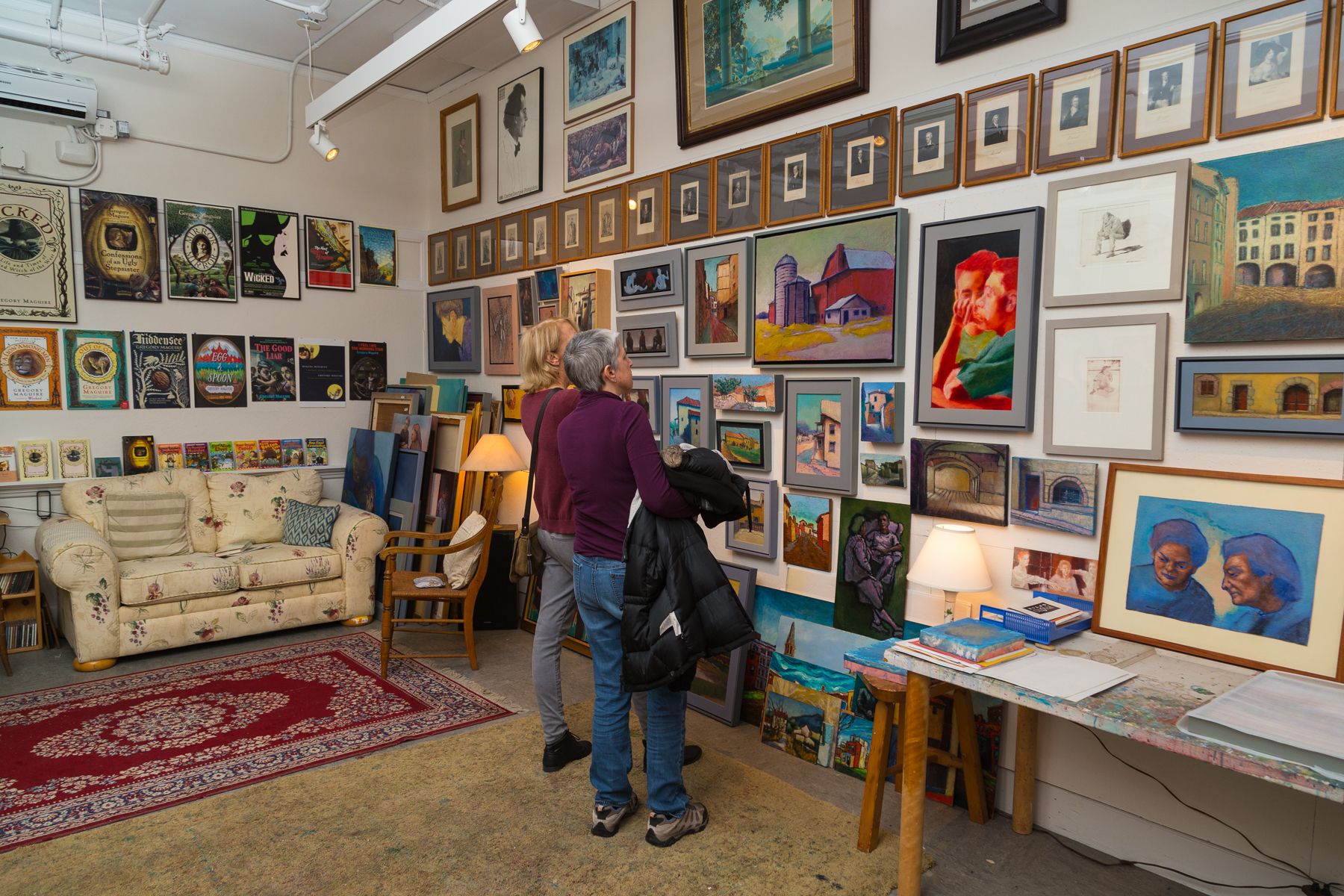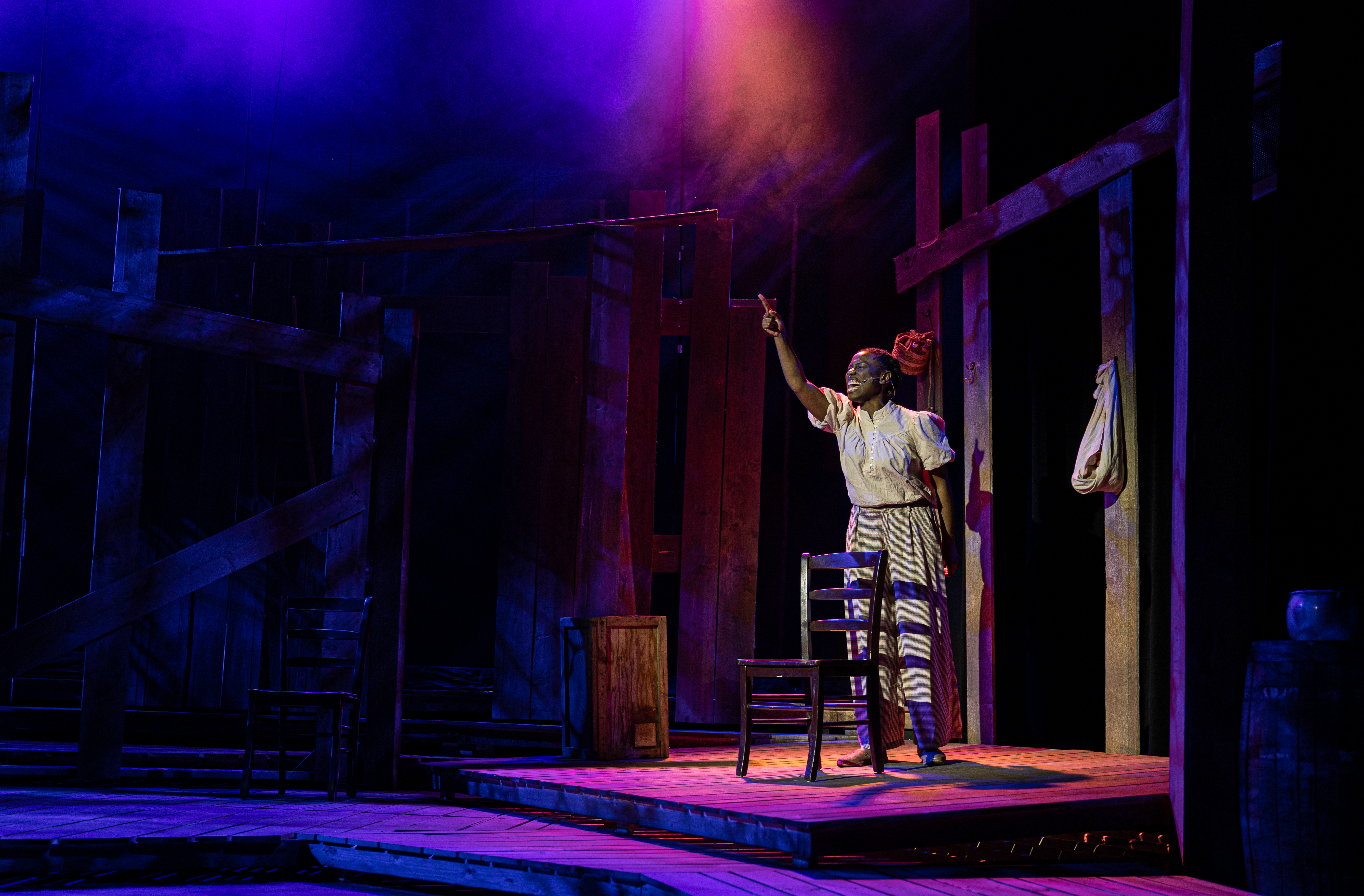Take 5 with Director Ashley Kelly Tata
September 26, 2024 by Stewart
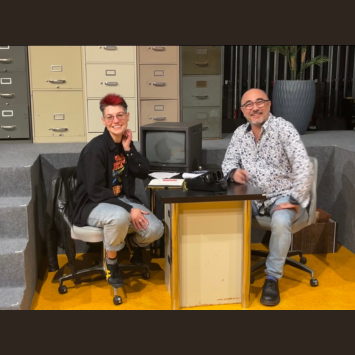
On the eve of opening weekend, we sat down on the set of Network with director Ashley Kelly Tata to discuss the show, the classic Chayefsky film that inspired the stage adaptation, and their longstanding interest in immersive multimedia and theatrical experiences. Hailing from New York, where they are currently a Visiting Assistant Professor and the Artistic Producer of Theater & Performance at Bard College, Tata is a director whose works have been called “fervently inventive,” and like something that “reaches out across the centuries and punches you in the throat” in the New York Times and “extraordinarily powerful” by the LA Times.
TUA: How would you describe this adaptation?
AKT: I didn’t see the original stage production, so I’m not comparing it to that at all. I actually didn’t even read too much about the stage production in preparing for this production. I was just responding to what still resonates from a text that’s nearly 50 years old and finding the opportunities to think about what it is to comment on something that was made for film….that was commenting on television….that is now theater. So what does that mean as far as a performance aesthetic? What does it mean to allow something to unfold in real time and space as opposed to a cooler media like television or film that’s a bit more closed off? There are definitely differences between the screenplay and Lee Hall’s stage play. He did a great job to keep the core of the piece as it is.
Our production pays attention to what maybe resonates from the mid 1970s to today. In our production, Howard Beale delivers lines that feel very much of the period to camera, to emphasize the distance in time through the mediating it so audience members think, “Ok now I’m seeing this on television; it’s a different time and place.” But then there are these lines that are kind of ‘slippery’ – they kind of smack you in the face sounding like something that might be a sound bite from today.
TUA: You made a deliberate choice to have this staging be firmly as a period piece in the 70s. The film came out in the bicentennial year of 1976 and here we are at the semiquincentennial year. In a way, it’s as relevant as ever to what we’re experiencing today. Can you talk more about your decision to lean into the periodness of the 70s?
AKT: There are things that resonate very much and then there are things that feel very of the period. One thing that I’ve taken from reading Brecht is this idea that it can be dangerous to elide historical periods together and that it’s important to recognize that while there are tropes that do repeat over and over again, there are really specific situations that are different. I think it’s also helpful in terms of being able to allow for seemingly contradictory ideas to exist at the same time. As soon as we start saying, “Oh, that’s exactly how it was in the 1970s,” that kind of hyperbolic thinking, we can just put it in a box and not really think too deeply about it. And it can either result in a kind of cynicism or a sense of: I’m just going to throw my hands up and not try to make any change at all. So, I think for me it was important to allow for these resonances to wave to the present day, but without the suggestion that it’s exactly the same. It’s really interesting to think that the piece begins with reportage on the second of two assassination attempts on the then-sitting President Ford. So there’s certainly things like that where you go into rehearsals and it feels like it’s ripped from the headlines. But there are differences.
Another shift comes when we’re talking about gender and racial dynamics. It was important to stage something that felt different from then and now.
I think in particular about the character of Diana, who becomes a television executive over the course of the piece. The way that she is portrayed and viewed by the men in the world of the piece is partially of a time. I was very interested in the reality of when Diana’s character lived. This piece takes place only a few years after Roe v. Wade passed. So that means her relationship to her body, to her sexuality, and her agency over her body is going to be different than before that. It was also only a little bit after the equal credit opportunity act so she would have been able to sign for her own credit card. Her relationship with money and what it means to “succeed” shifts.
TUA: Another thing that’s changed of course is the primacy of television as the dominant medium defining culture. This show is so media-rich in the way that you’ve designed it. You renewed your collaboration with scenic designer Afsoon Pajoufar. Can you say more about that?
AKT: Afsoon and I have worked together pretty consistently since I think 2018. I actually met her when I was doing a production at Harvard and I was asked to work with local designers. Afsoon was finishing her MFA at BU and was recommended to me. We had one conversation and connected on the aesthetic of Rainer Werner Fassbinder’s films. So I actually worked with Afsoon locally and after she graduated, she moved to New York and we continued to collaborate together over the years.
I really love the design process and working with designers. When I’m putting together a design team, I want to find a healthy mix of a couple of people I’ve worked with many times before and have a shorthand with, and then a couple people I’ve never worked with before. Because it keeps the aesthetic fresh and new for everybody. And it helps me not simply fall into shorthand with everybody I’m working with, so we ourselves don’t fall into tropes of our own making.
The other thing that’s really exciting for me, especially working with designers who I met when they were either in grad school or fresh out of grad school, is seeing where the trajectory of their work is moving. I sometimes consciously ask to work with designers on a project where I feel like it will be a kind of exposure for them that could be really opportune. At The Umbrella, I felt like there was an opportunity here for Afsoon to show an aesthetic that really suited the piece. She comes from a background where this kind of 1970s postmodern, minimalist furniture design is very exciting. It’s also something where I know she’s worked with other directors who use a lot of video design in their work. So working with a scenic designer that allows for projection surfaces or the placement of other media elements is as helpful as working with a lighting designer who is used to lighting for video. So to me, this is just an opportunity to continue a relationship with someone who I certainly intend to work with over the years.
TUA: It’s fair to say that your productions are very media rich and immersive. I read you have a background in immersive escape experiences. How does that translate to the work you do on stage?
AKT: I’ve had a lot of jobs over the years to support the directing habit, and one of them for a few years was working for this escape room experience. And the idea was that it was very narrative based. So there was a whole world and world building that happened, and that connected different rooms to each other. And there was like a five-day immersive experience out in the streets of New York City!
TUA: Can you tell us about working with this particular group of performers?
AKT: Some of the cast who operate the video cameras on stage have become great cinematographers during rehearsals. I think that only happens when people decide they want to be fascinated by their fellow performers. It’s like finding the beauty that’s in the person who is on the stage and that’s how you find the shot. I think that everybody’s really caring for each other and supportive of getting through this evening together. So that’s been a really wonderful experience. I know that the people who are on the design team and the performance team, the Stage Manager, Vanessa Hart, these people who have returned to The Umbrella were just thrilled to be coming back to this space. I know that’s why so many people signed up to be on this project. I was just grateful to be walking into a space where it felt like everybody already felt good about being here. And I hope that I contributed to that vibe as well.


